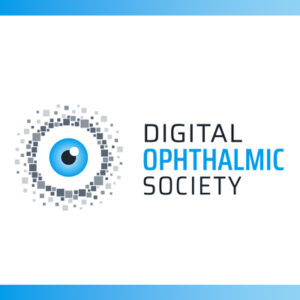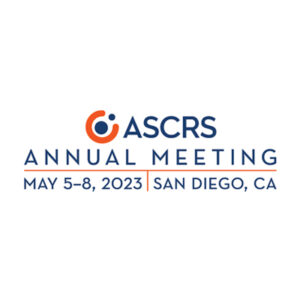ONLINE EXCLUSIVE
Refractive
December 2022
by Liz Hillman
Editorial Co-Director
From overselling extremely rare complications to neglecting the full story on patient counseling
The FDA issued draft guidance for LASIK patient labeling recommendations in July 2022 that ASCRS and refractive surgeons consider “highly biased and misleading to potential patients.” During the FDA’s comment period, ASCRS submitted these and more specific comments, urging the FDA to withdraw this draft and work with medical societies to explore how to improve patient communications together.
Last week, the New York Times,1 CBS,2 local news outlets,3 and trade publications4 picked up the story, but ophthalmologists, on social media and who spoke with EyeWorld, say most coverage does not convey the whole story.
Some headlines imply that LASIK might not be safe and that it doesn’t include enough warnings about possible complications—both of which are untrue, said Vance Thompson, MD.
“This is one of the main reasons that we’re trying to have this tone and balance brought in because it ends up scaring the public. It can even scare the media,” Dr. Thompson said. “They’re looking at this as the truth, and it’s coming from the FDA. It’s a well-respected agency that has an extremely important role in the way our country’s people are treated medically and surgically.”
Dr. Thompson said that the fear from an “out-of-balance document” that talks about dangers and complications without giving perspective as to the success rates and actual complication rates is damaging and doesn’t provide balance to the patient discussion as to the risks and benefits, which is within the purview of the conversation between medical practitioners and their patients, not the FDA.
“LASIK is one of the most studied and successful surgeries in medicine today, and the FDA has started a domino effect in the media and public eye with this proposed document that is not based on well-documented modern-day scientific evidence,” Dr. Thompson said.
In the past, draft guidelines in other areas of medicine have become more enforceable documents, Dr. Thompson said, and they can make it easier down the road to begin changing the way physicians practice in a way that may not be in the patient’s best interest.
“That’s the main message we want to get across. LASIK has evolved tremendously from when the FDA approved it as safe and efficacious. Over that quarter of a century, the progress that’s been made on top of when they originally said it was safe and efficacious is important, and there’s good documentation on that in the literature. [The FDA’s] document wasn’t well referenced, wasn’t referenced in a balanced way, and it doesn’t pass our scientific standards for how a document like this should be,” Dr. Thompson said.
What’s needed
The FDA issued its draft guidance for LASIK patient-labeling recommendations “based on concerns that some patients are not receiving and/or understanding the information regarding the benefits and risks of LASIK devices.”
ASCRS submitted comments on the draft guidance to the FDA in November during its open comment period, urging the FDA to “withdrawal the draft guidance and work closely with ASCRS and other ophthalmic societies to reexamine current patient materials and identify opportunities that might improve patient education about LASIK procedures.”
ASCRS’ concerns about the document surround the lack of balance in the recommendations, the lack of relevant peer-reviewed literature regarding the safety and efficacy of LASIK, and the sanctity of the physician-patient relationship. According to the Society, these recommendations, if finalized, are likely to confuse patients and may reduce physicians’ ability to personalize their discussions based on their medical expertise relative to individual patient situations.
The Society also noted that the FDA has stated many times it should not be involved in matters of clinical practice, and the Code of Ethics of the American Academy of Ophthalmology and state legislation firmly place the responsibility for obtaining informed consent on the surgeon.
Overall, Dr. Thompson said it’s valid to have discussions about how to improve patient communication surrounding the procedure to ensure patients are receiving adequate informed consent. It’s also valid, Dr. Thompson continued, to emphasize the importance of surgeons staying up to date on the use of the latest diagnostic and procedural technologies and techniques that serve to improve patient selection and outcomes.
“While I don’t think a formal document is needed, if it’s going to happen, we’re asking the FDA to work with us and the other societies to provide balance,” Dr. Thompson said. “The second issue of doctors … going through the training, taking advantage of technology and knowledge that we’ve learned with this procedure, that to me is a real issue. This procedure is too powerful, too impactful, working on too precious of a sense to not have more scrutiny to [ensure surgeons’ skills and knowledge are up to date].”
Dr. Thompson also acknowledged that there are rare side effects that can occur with LASIK. Staying up to date with diagnostic and surgical skills minimizes these risks.
“We are all empathetic with patients who have issues with any device or surgical issue,” he said, adding later, “However, to be talking about things that were brought up 14 years ago, which the FDA’s document does, when studies have been done that show that modern-day LASIK has evolved due to wonderful technology and the FDA-monitored studies that have brought it to the market, showing them safe and effective, the advancement and knowledge that has taken place … to be going backward with some of these issues that get into the practice of medicine, when the FDA is there to make sure that drugs and devices are safe and effective for the American public. It’s not there to practice medicine.”
What’s missing
The New York Times reported, “[Dr. Thompson] noted over 90 percent of patients in the F.D.A.’s own studies expressed satisfaction with the results because they ‘are achieving good vision without spectacles, which is the goal of most patients.’” Dr. Thompson clarified to EyeWorld what he said was that the FDA’s PROWL-1 and PROWL-2 studies (the latter of which he was an investigator for) had very high visual satisfaction ranging from 96–99% and overall satisfaction ranging from 98–99%.5
Dr. Thompson said that the studies have shown high patient satisfaction, high success, and low risk with modern-day LASIK. Studies have shown healing side effects that resolve with time but also rare but important side effects that can be permanent. This balance between benefits and risks is well studied and should be a part of this document just like it is in a proper informed consent discussion between the doctor and their patient, he said.
“Yes, there are some dry eye symptoms during healing. Yes, we should analyze the tear film preoperatively and make sure we can get to normalcy prior to surgery or simply not recommend surgery. Yes, there can be some dry eye issues postop. But patients in the PROWL studies who had preop dry eye symptoms had less of those symptoms after surgery, people who had none of those symptoms preop had more postop, and we would expect that in a study focusing on 1- and 3-month post-LASIK data. These symptoms lessen with time and proper postoperative care.”
Some reports have pointed out that the FDA’s draft guidance noted that patients should be warned about the potential for chronic pain or for needing glasses or contact lenses again at some point postop. Dr. Thompson said all of these possibilities and others are included in the proper, full informed consent.
“They have to be in there, and we talk about those rare risks. We have to talk about everything that’s been reported,” he said. But he added we also have to put it into perspective and discuss the chances of these issues based on our complete preoperative exam and analysis.
While the media seems to focus on some of the extreme, negative reactions some patients have had after LASIK, it seems rare to hear how LASIK can be an improvement on patient safety over optical devices. Not only can improper contact lens use cause sight-threatening infections, but some patients with more severe refractive error can be quite debilitated by traditional optical devices, and LASIK gives them the ability to successfully perform their daily tasks.
“It’s not unusual to hear stories about mothers who sleep with their glasses, military members who either couldn’t get in [to the military] or once they got in developed more refractive error and got into situations where they didn’t have their optical devices and it was a safety issue, or policemen or firemen who go into certain situations with glasses or contact lenses and they get knocked off. There are a lot of people who have [the surgery] done to be better for their hobbies or for freedom, but there are also some very important reasons that people have [the surgery] done that are life changing, allowing them to get a job, get into the military, or to be able to get up at night and see.
“The stories that we hear about happy patients with this life-changing procedure are everyday occurrences,” Dr. Thompson continued. “… This highly successful procedure that impacts people in such a positive way does have a small but important percentage of patients who have issues. This is where us doctors need to be our best and learn how to use the best diagnostics and keep our skills up and keep the education process going by attending national meetings and keeping our team well educated on their roles such as quality history taking and diagnostic testing acquisition. … [Negative situations] are extremely rare, and they’re minimized by great preoperative screening and quality diagnostics, quality treatment technology, and quality postoperative care.”
What really happens
When patients inquire about refractive surgery, like LASIK, at Dr. Thompson’s practice, they begin a multistage process that can last several weeks or even months. First, Dr. Thompson noted that a patient might come in saying they want LASIK, but they begin a comprehensive refractive surgery evaluation that will look at their candidacy not just for LASIK but other refractive procedures that might be more appropriate for their situation.
“We like them to understand that at the very beginning, even though LASIK is the most common refractive surgery performed, one of the things that makes it have such a high success rate is that there are other options, and we don’t want to push the limits of LASIK,” Dr. Thompson said.
From there, patients are asked to stop wearing contact lenses (if they wear them) for a time to ensure stable measurements. The tear film (exam and chemistry) is assessed, and if needed, it’s optimized to see if the patient can reach normalcy with treatment before undergoing LASIK. “We want patients to understand the tear film is important therapeutically for proper healing and optically for their best vision since the most powerful focusing element of the eye is the air/tear interface,” he said. Other testing such as corneal topography, epithelial mapping, wavefront analysis, and cycloplegic refraction can also complement the full dilated eye exam that represents a comprehensive LASIK consultation.
After the eye is deemed healthy, if they are a LASIK candidate, the patient is informed about what it’s like to go through the procedure, Dr. Thompson said. Their vision will be blurry right after the procedure, but by the next morning, and often by the end of the day, they should have legal driving vision without glasses, he said. However, there continues to be a healing process.
“We can do pristine measurements and wonderful surgeries, but patient will always have a healing response, and that’s why the patient needs to understand that they may not end up with as sharp of vision as they were hoping for, but you can fine tune after the healing process and after vision stabilizes,” he said. “Preoperatively, we need to set their expectations properly by telling them they may need an enhancement, and it’s important to not tell them we’re trying to rid the world of glasses.” Dr. Thompson explained that with internal aging of the eye, an enhancement or cataract surgery may be needed later, and the patient needs to know that.
Preoperatively, before dilation, is when Dr. Thompson’s practice provides informed consent, which is also sent home with the patient.
“Informed consent is very important to talk about the risks, the more common temporary side effects, and any potential healing issues, so the patient isn’t scared. That’s also why good follow-up care is so important. It’s not unusual for patients to forget some of this information, and that is why keeping in touch with your patients and making sure they are doing well is so important. … Informed consent, preoperative education, and postoperative care are all so important for patients to make a balanced decision on whether or not to have the procedure and to understand what’s worrisome or not postoperatively so they can go through this process with as much inner peace as possible.”
Dr. Thompson said the questions and concerns patients might express during this process varies. He said most have done some research before surgery, including looking into their surgeon and talking with other patients.
“A lot of them already know there are risks with LASIK, and they want to find the right surgeon who is keeping up with the technological advancements, is willing to tell them ‘no’ if they’re not a good candidate, and who will give them complete and transparent patient education,” he said.
“One of the most caring things we can do as physicians is get to know patients well enough—their goals and desires, their eye health, their personality, their patience level, their expectations—and combine their situation with our knowledge and expertise so we can put ourselves in their shoes and give them a heartfelt recommendation on whether to do nothing or consider a refractive corneal, phakic IOL, or lens-based procedure. Even though LASIK is the most common refractive surgical procedure we do, the best LASIK outcomes happen with a comprehensive and caring approach like this. Refractive surgeons take our patient education, recommendations, and informed consent very serious and we appreciate the FDA’s desire to help, but this draft guidance isn’t complete or reflective of the current clinical experience with LASIK.”
About the physician
Vance Thompson, MD
Vance Thompson Vision
Sioux Falls, South Dakota
References
- Rabin, RC. “LASIK Patients Should Be Warned of Complications, FDA Draft Says. New York Times. 2022 Dec 6.
- @CBSNews. Twitter. 2022 Dec 7.
- Lazarus D. Is Lasik safe? Maybe not quite so much, says FDA. KTLA. 2022 Dec. 7.
- Taylor NP. AdvaMed asks FDA to withdraw divisive draft guidance on LASIK surgery. Healthcare Dive. 2022 Dec 8.
- Eydelman M, et al. Symptoms and satisfaction of patients in the Patient-Reported Outcomes With Laser In Situ Keratomileusis (PROWL) studies. JAMA Ophthalmol. 2017;135:13–22.
Relevant disclosures
Thompson: None
Contact
Thompson: vance.thompson@vancethompsonvision.com



